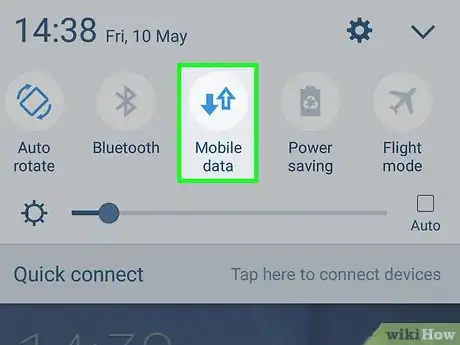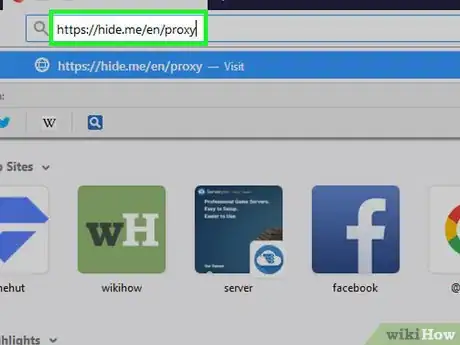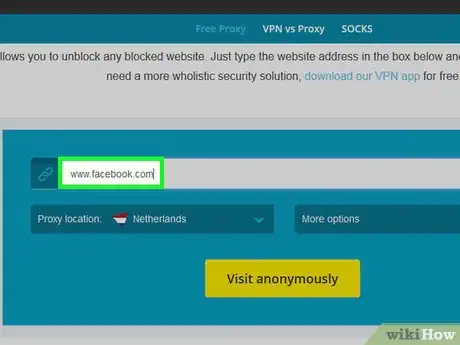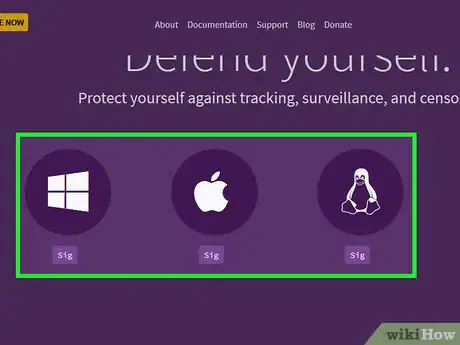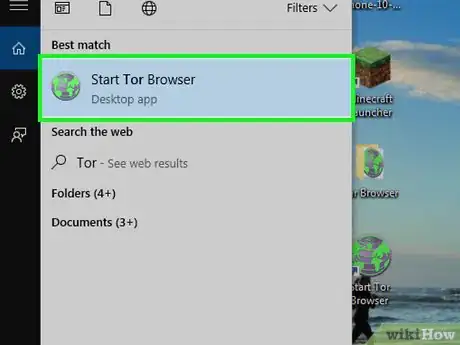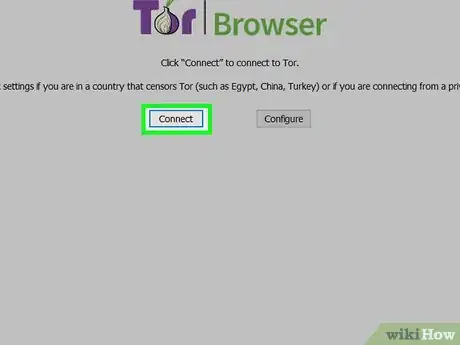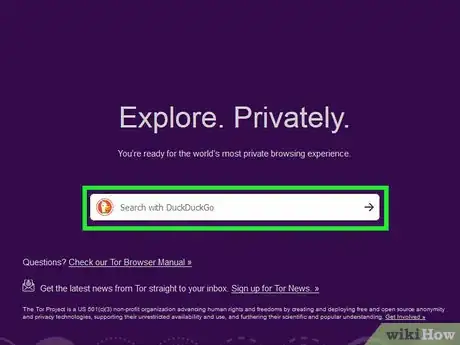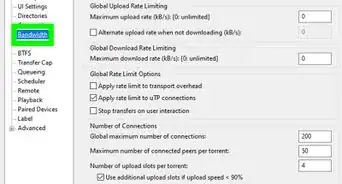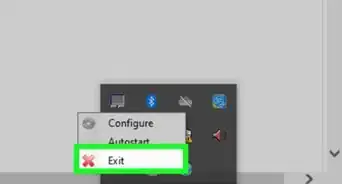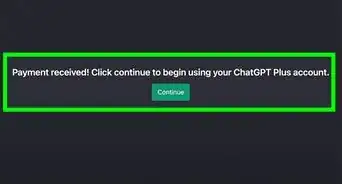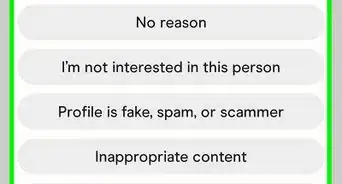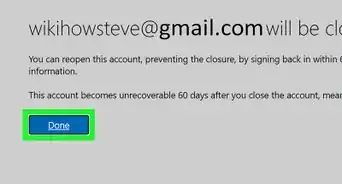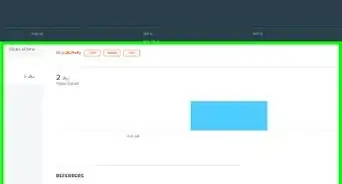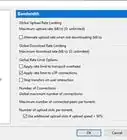This article was co-authored by wikiHow staff writer, Jack Lloyd. Jack Lloyd is a Technology Writer and Editor for wikiHow. He has over two years of experience writing and editing technology-related articles. He is technology enthusiast and an English teacher.
The wikiHow Tech Team also followed the article's instructions and verified that they work.
This article has been viewed 584,455 times.
Learn more...
This wikiHow teaches you how to access websites and content that are otherwise blocked in your browser. Since web restrictions can vary heavily depending on the program or method being used, there isn't a guaranteed way to bypass web restrictions; however, you can usually use proxy websites or a portable browser called Tor to circumvent restrictions, and there are even a few minor tricks that you may be able to use on some low-security connections.
Steps
General Strategies
-
1Figure out the source of the web restrictions. Depending on the source of the web restrictions (e.g., a school network versus parental controls), the strength of the web restrictions will vary:
- Public web restrictions, such as the ones found in coffee shops or on parental-controlled computers, can sometimes be bypassed with most of the general strategies found in this section.
- Regional web restrictions, such as the ones found on some YouTube content, typically require a proxy or VPN to access.
- School, government, and other workplace-style web restrictions are usually foolproof enough that you'll need to employ a proxy or portable browser. You can still try using cellular data to tether your computer, however.
-
2Try visiting an alternative version of a website. Some web restrictions block specific web addresses (e.g., www.facebook.com) without blocking variations of the address. You may be able to bypass specific domain blocks by using one of the following variations on the site's address:
- IP address - If you can find the website's IP address, you may be able to enter the IP address in the address bar as a way of circumventing the web restrictions.
- Mobile site - By placing a m. between the "www." and the rest of the website's address (e.g., www.m.facebook.com), you can open the mobile version of the website. The mobile version often must be blocked separately from the regular version, so some web restrictions miss this exploit.
- Google Translate - In rare cases, you can go to https://translate.google.com/ and enter your website's address in the left-most box, select a new language for the right-most box, and click the link in the right-most box to open the website in a different language.
Advertisement -
3Use a cellular data connection. If you have a supported iPhone or Android smartphone, you can use a process called "tethering" to use your phone's cellular data connection as a Wi-Fi network. This method is relatively guaranteed as long as your computer allows you to select a network.
- Keep in mind that tethering takes up a significant amount of cellular data, especially if you're downloading files or streaming video.
- The linked article references using tethering on a laptop, but the same instructions will work for a desktop computer.
-
4Connect directly to the modem. If you can attach your computer to the Internet modem via Ethernet, you can bypass most network restrictions. Naturally, you shouldn't do this if you don't have permission to access the modem.
- The modem is usually separate from the router. If your Internet connection uses a router/modem combo, this method most likely won't work for you.
- This method is most effective for home Internet connections rather than school, work, or public connections.
-
5Use a Virtual Private Network (VPN). If you're able to edit your computer's network connections (e.g., select a Wi-Fi network to connect to), you can most likely set your computer to use a VPN. Keep in mind that you must first select and pay for a VPN service before you can use most VPNs.
- VPNs can be used on mobile platforms (e.g., smartphones or tablets) as well as on computers.
- One free VPN option is Hotspot Shield. If you can download and install Hotspot Shield on your selected computer, you can turn it on without having to configure it in your computer's settings.
Using a Free Proxy
-
1Understand how proxies work. Proxies are essentially miniature VPNs that apply only to the browser tab in which they're open. When you enter a request (e.g., a website's address) in a proxy site's search bar, the request is routed through several different servers (but not the one on which your normal Internet connection is located) in order to circumvent the current server's restrictions.
- The main limitation of proxies is that they can be blocked just like any other website. Additionally, it can be hard to find proxies if the web restrictions block all searches that include the word "proxy" or "proxies".
- If you're unable to use a proxy on your computer, your only remaining alternative is using a portable browser.
-
2Select a proxy service. Go to any one of the following proxy sites:
- HideMe - https://hide.me/en/proxy
- ProxySite - https://www.proxysite.com/
- ProxFree - https://www.proxfree.com/
- Whoer - https://whoer.net/webproxy
- Hidester - https://hidester.com/proxy/
- You may have to try more than one proxy site, as it's likely that one or more of the above sites are blocked by your web administrator.
- If none of these proxies work, you may be able to search for a different proxy by typing best online proxy 2018 (or similar) into a search engine.
-
3Click the proxy site's search bar. This text box is usually in the middle of the page, though its location will vary depending on your selected proxy service.
- A proxy site's search bar functions exactly like a browser's address bar, though some proxy services don't have search engines attached to their search bars.
-
4Enter a blocked site's address. Type the address of a blocked site (e.g., www.facebook.com) into the search bar.
- Make sure that you include the ".com" (or ".org", etc.) part of the website's address.
-
5Click the Go button. This button's appearance will vary depending on your chosen proxy service (for example, you might click Browse anonymously), but it will usually be below or to the right of the text box.
- If you're using the ProxFree proxy, you'll click the blue PROXFREE button.
- You can also press your computer's ↵ Enter or ⏎ Return key.
-
6Browse your site like usual. Your site should load like it does when browsing on an unrestricted computer, though it may take longer to load due to the proxy's server location.
- Keep in mind that, while proxies hide your traffic from your web administrator, the host of the proxy can see all of the information that you submit. Avoid entering sensitive information while on the proxy's site.
Using Tor
-
1Make sure that you can use a portable browser on your computer. In order to use Tor, which is a browser that has a built-in proxy, you'll need to install it onto a flash drive that you can then plug into the restricted computer. For this to work, there are a couple of other conditions to meet:
- The restricted computer must have at least one USB port.
- The restricted computer must allow you to open files from a flash drive.
- Your portable browser must be installed on the flash drive, not just stored on the flash drive.
-
2Plug a flash drive into an unrestricted computer. It should plug into one of your computer's USB ports.
-
3Open the Tor download page. Go to https://www.torproject.org/download/download-easy.html.en in your browser.
-
4Click DOWNLOAD. It's a purple button in the middle of the page. The Tor setup file will download onto your computer.
- If you're prompted to choose a download location, click your flash drive's name and then skip the next step.
-
5Move the Tor setup file onto your flash drive. Go to the folder into which the setup file downloaded, then do the following:
- Click the file to select it.
- Press Ctrl+X (Windows) or ⌘ Command+X (Mac) to copy the file and remove it from its current location.
- Click your flash drive's name on the left side of the window.
- Click a blank space in the flash drive's window.
- Press Ctrl+V (Windows) or ⌘ Command+V (Mac) to paste the file into your flash drive.
-
6Install Tor on your flash drive. You'll do this by selecting your flash drive as the place in which Tor is installed. To do so:
- Windows - Double-click the Tor EXE file, select a language and click OK, click Browse..., select your flash drive's name and click OK, click Install, and uncheck both boxes and click Finish when prompted.
- Mac - Double-click the Tor DMG file, verify the download if necessary, and follow any additional instructions on-screen, making sure to select your flash drive as the location onto which to install Tor.
-
7Eject your flash drive. Once Tor is installed, you can safely remove the flash drive from your computer.
-
8Plug your flash drive into a restricted computer. This should be the computer on which you want to open a blocked website.
-
9Open Tor. Go to your flash drive's folder, double-click the "Tor Browser" folder, and double-click the green-and-purple "Start Tor Browser" icon. You should see the Tor launcher window appear.
-
10Click Connect. It's at the bottom of the launcher. After a moment, the Tor window will open.
- Tor resembles an old version of Firefox.
-
11Go to a blocked site. Use the text box in the middle of the Tor welcome page to do so. Since Tor opens with a built-in proxy, you should be able to visit any site.
- The text box in the middle of the page uses a search engine called DuckDuckGo.
- Keep in mind that site load times will increase due to your browser traffic being routed through different servers.
Community Q&A
-
QuestionCan a school network admin see if I use command prompt?
 Aiden MartinezCommunity AnswerUnless your school uses LanSchools, then no.
Aiden MartinezCommunity AnswerUnless your school uses LanSchools, then no. -
QuestionIs there any way to find which websites are visited by my students via proxysites?
 Community AnswerIf they don't clear their internet history, they may show up there.
Community AnswerIf they don't clear their internet history, they may show up there. -
QuestionDoes changing a DNS server bypass web restrictions?
 Community AnswerIt can bypass OpenDNS, but other than that it won't do anything (and even then, whoever is using OpenDNS for the restriction can see if you get on the site).
Community AnswerIt can bypass OpenDNS, but other than that it won't do anything (and even then, whoever is using OpenDNS for the restriction can see if you get on the site).
Warnings
- Network administrators for major companies may take disciplinary action against you if you are caught bypassing network restrictions at your place of work.⧼thumbs_response⧽
- Bypassing network restrictions at school may be grounds for suspension or even expulsion.⧼thumbs_response⧽
About This Article
1. Figure out the source of the restrictions.
2. Try visiting a site by IP address.
3. Connect to the mobile version of the site.
4. Use https://translate.google.com to open the site.
5. Use your cellular connection.
6. Connect directly to the modem.
7. Use a VPN or proxy server.


